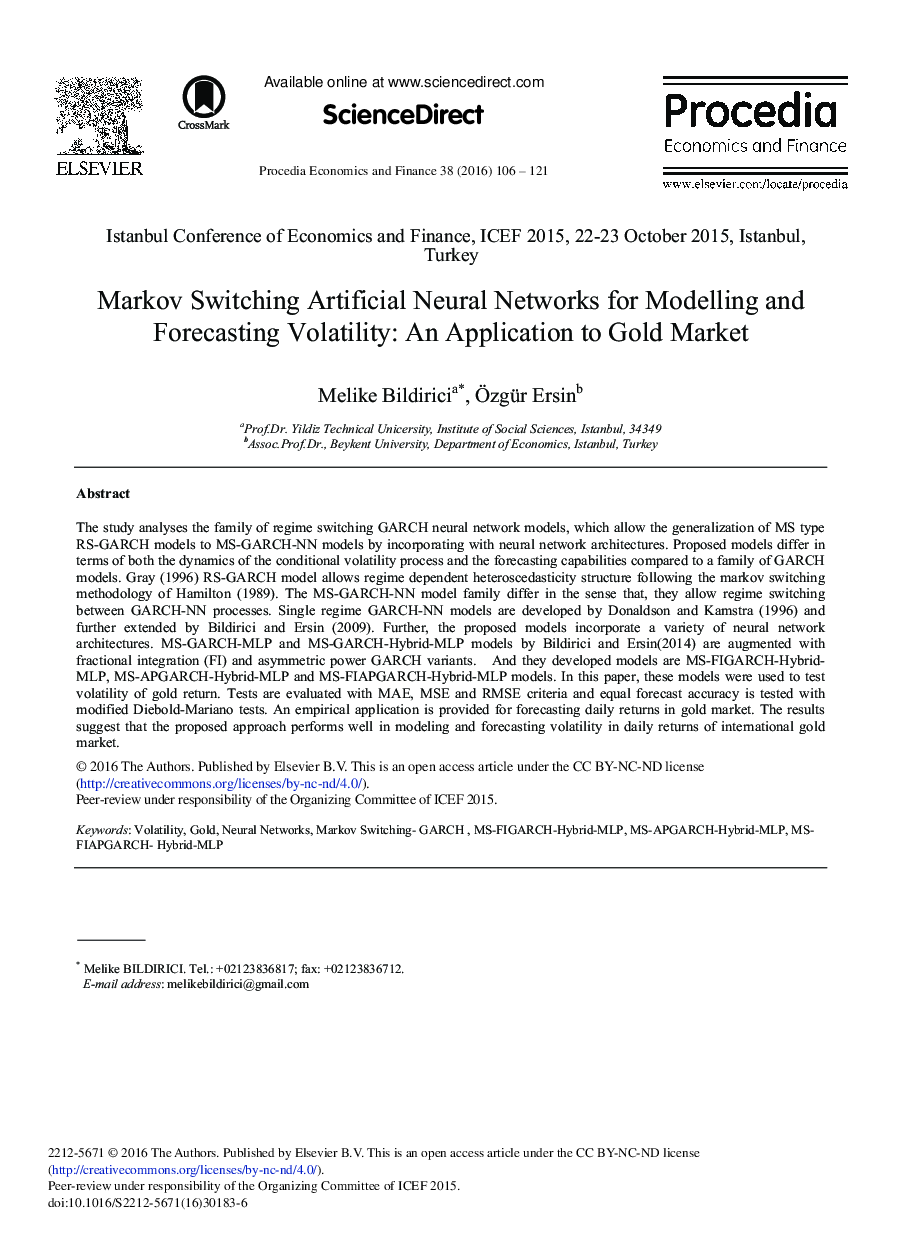| Article ID | Journal | Published Year | Pages | File Type |
|---|---|---|---|---|
| 982528 | Procedia Economics and Finance | 2016 | 16 Pages |
The study analyses the family of regime switching GARCH neural network models, which allow the generalization of MS type RS-GARCH models to MS-GARCH-NN models by incorporating with neural network architectures. Proposed models differ in terms of both the dynamics of the conditional volatility process and the forecasting capabilities compared to a family of GARCH models. Gray (1996) RS-GARCH model allows regime dependent heteroscedasticity structure following the markov switching methodology of Hamilton (1989). The MS-GARCH-NN model family differ in the sense that, they allow regime switching between GARCH-NN processes. Single regime GARCH-NN models are developed by Donaldson and Kamstra (1996) and further extended by Bildirici and Ersin (2009). Further, the proposed models incorporate a variety of neural network architectures. MS-GARCH-MLP and MS-GARCH-Hybrid-MLP models by Bildirici and Ersin(2014) are augmented with fractional integration (FI) and asymmetric power GARCH variants. And they developed models are MS-FIGARCH-Hybrid-MLP, MS-APGARCH-Hybrid-MLP and MS-FIAPGARCH-Hybrid-MLP models. In this paper, these models were used to test volatility of gold return. Tests are evaluated with MAE, MSE and RMSE criteria and equal forecast accuracy is tested with modified Diebold-Mariano tests. An empirical application is provided for forecasting daily returns in gold market. The results suggest that the proposed approach performs well in modeling and forecasting volatility in daily returns of international gold market.
